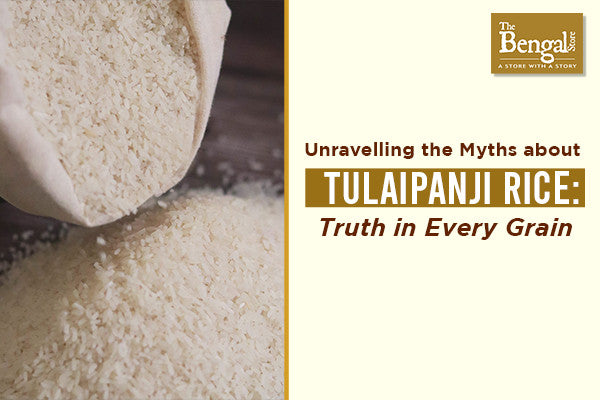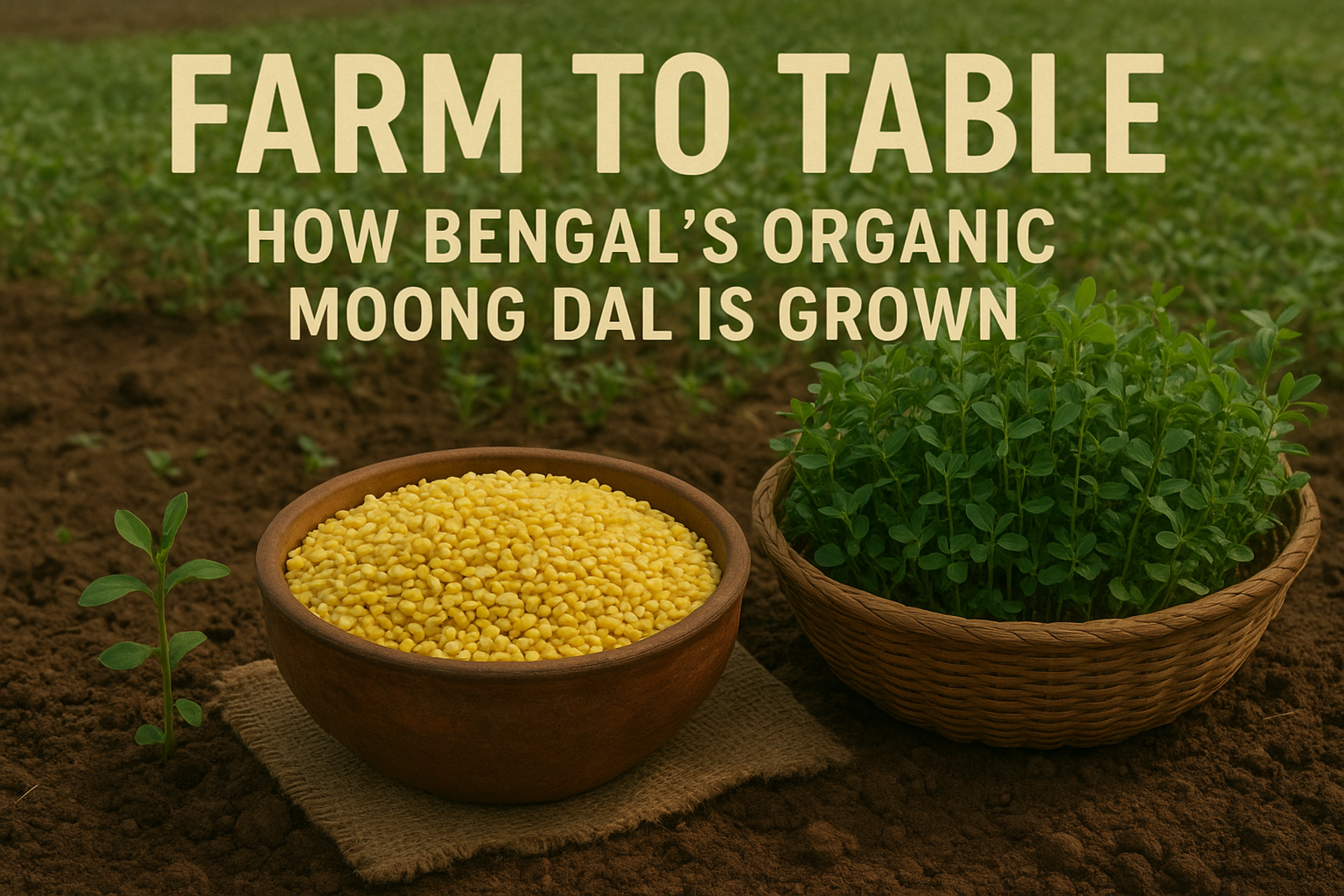Unravelling the Myths About Tulaipanji Rice: Truth in Every Grain
Rice is a common food in lots of homes and is an important part of what we eat. Tulaipanji Rice is a kind that smells nice and comes from West Bengal. But sometimes people have the wrong ideas about it.
This blog will talk about some wrong thoughts people have about Tulaipanji Rice. We want to give clear and correct details to those who might have the wrong ideas about this special rice.
We hope to help people understand Tulaipanji Rice better and know the true facts about it.
Myth 1
Tulaipanji Rice is High in Calories and Unhealthy
Contrary to the belief that all rice varieties are high in calories and detrimental to health, Tulaipanji Rice stands out as a nutritious option. Tulaipanji Rice is a low-glycemic-index food, which means it has a slow impact on blood sugar levels. Additionally, it contains essential nutrients such as vitamins, minerals, and fibre, contributing to a balanced diet when consumed in moderation.
Myth 2
Tulaipanji Rice Causes Weight Gain
Many people think Tulaipanji Rice makes you gain weight, but that's because they don't understand carbs well. Unlike sugary carbs, Tulaipanji Rice is a good kind—a complex carbohydrate. It gives you lasting energy without making your blood sugar shoot up fast. If you eat it as part of a balanced diet, Tulaipanji Rice can be good for you. It helps you feel full and stops you from eating too much, supporting a healthy lifestyle.
Myth 3
Tulaipanji Rice Lacks Nutritional Value
Some people believe that Tulaipanji Rice lacks nutritional value compared to other rice varieties. However, Tulaipanji Rice is rich in essential nutrients, including B vitamins, iron, and magnesium. These nutrients play a crucial role in maintaining energy levels, supporting the immune system, and promoting overall well-being. Choosing whole-grain Tulaipanji Rice over refined varieties ensures a higher nutritional content.
Myth 4
Tulaipanji Rice Is Not Suitable for Diabetics
Another prevalent myth is that Tulaipanji Rice is unsuitable for individuals with diabetes due to its carbohydrate content. In reality, Tulaipanji Rice has a lower glycemic index compared to some other rice varieties, making it a suitable option for those managing diabetes. When consumed in controlled portions and as part of a balanced meal, Tulaipanji Rice can be included in a diabetic-friendly diet.
Myth 5
Tulaipanji Rice is Not Environmentally Sustainable
Some people wrongly think growing Tulaipanji Rice harms the environment. Actually, Tulaipanji Rice is often grown in a way that helps the environment. Farmers use sustainable methods, like traditional ways that focus on keeping the soil healthy and supporting biodiversity. When you pick Tulaipanji Rice that's sourced sustainably, you're supporting farming practices that are good for the environment. This choice plays a part in keeping our surroundings healthy and balanced.
Wrapping Up
Tulaipanji Rice is a good and flexible grain that clears up a lot of wrong ideas about how it affects our health. If we know the real facts and eat Tulaipanji Rice as part of a mix of healthy foods, we can enjoy its good things without getting fooled by the wrong information.
It's super important to choose wisely, using the right details, to stay healthy and value the cultural and healthy parts of this special rice. Including Tulaipanji Rice in our meals, along with other good foods, helps us understand how it helps our health.
Eating Tulaipanji Rice with various foods helps us understand its good effects on health. You can buy the best Tulaipanji Rice from The Bengal Store, a popular online food store.








